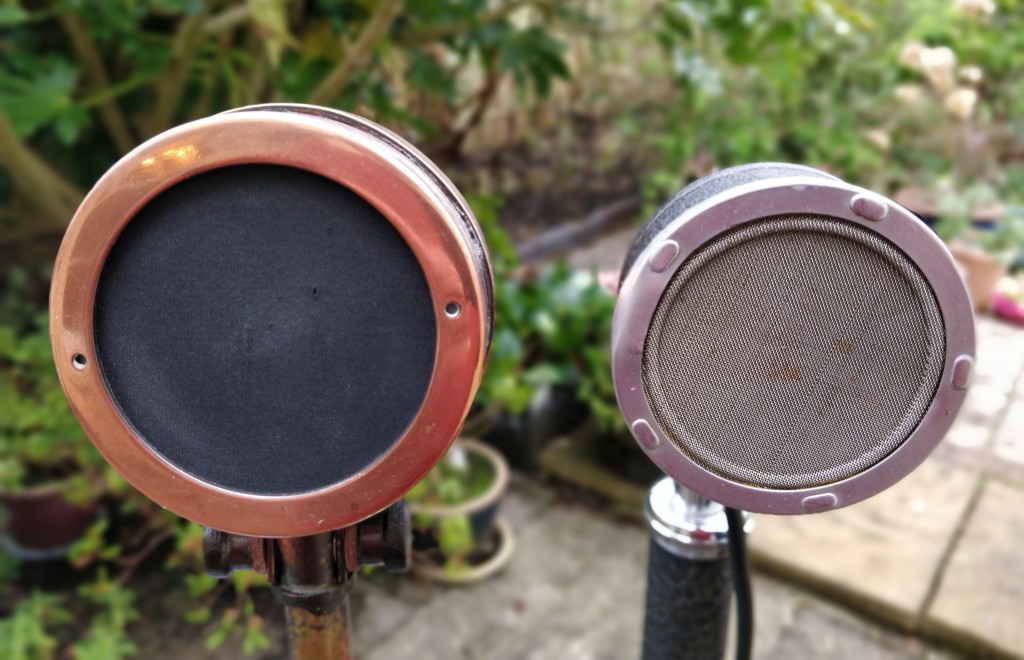Designed in the early 1950’s and used extensively by the BBC, the STC4035 replaced the STC4017C which had been in service since 1938. Throughout the 50’s and 60’s the 4035, along with its Bakelite cousin the STC4032, were amongst the BBC’s primary outside broadcasting microphones. Apart from the casing and switching on the 4032 these two microphones were identical. Although both models had the same very effective wind resistant fine mesh grill, in the event of very high wind or rain the 4001.A. windshield could be added.
The 4035 was much lighter and smaller than the old 4017, and although it was essentially omnidirectional there was some directionality at high frequencies.
Here is a full description and technical specification.
Below is a pricelist from the late 50’s.

At the BBC the 4035 was used for a very wide range of tasks.
Big Ben
In the mid 50’s an STC4035 with a modified connector/mounting attachment was installed directly beneath ‘Big Ben’ in the Elizabeth Tower at Westminster. This was connected to BBC Broadcasting House and used to broadcast ‘live’ the world famous clock chimes of this huge, iconic bell. My Dad (along with the rest of the British population) always used to set his watch by the BBC chimes.
Horse Racing
In order to capture the exciting thunder of horses’ hooves and all the thrills and spills of the race, BBC Manchester Radio OBs used to place a 4035 in every jump for the Grand National.
Wimbledon.

(Photo IET Archives)
They were also used as general effects mics at many other sporting, and outdoor events, very often used to pick up atmosphere and the sound of the crowd.
Perfect for Political Speeches

STC Dual stand.
ITV arrived in the mid-1950’s and also found plenty of use for the mighty 4035!
I love the look of dedicated concentration, trying to focus the dish on high speed aircraft using only headphones!

The 4035 connection socket is the same as most STC microphones and requires the 4069A plug (which is still widely available). Interesting to see the screw heads in this picture. These can be undone to separate the upper and lower halves of the microphone for repair. Normally they are covered with hard wax.
So……. What does it sound like? CLICK HERE for audio clip.
Conclusion
If there was a competition for the world’s most boring looking, least stylish microphone, the STC4035 would definitely be in the running, with its dull grey/black finish and uninteresting shape. Also, unfortunately, unlike the ‘Apple and Biscuit’ STC4021 or ‘The Stick’ STC4037, the poor old 4035 doesn’t even have an amusing nickname! However, good looks aren’t everything and if you are simply looking for a robust ‘workhorse’ microphone with a reputation for being completely reliable, even in the most adverse conditions, then the STC4035 is definitely worth considering!








Thanks! I enjoyed that, although I could not connect to a recording of the mic.
LikeLike
The link to the recording should be working now.
LikeLike
hello Martin, any clue on how to remove the windshell?
LikeLike
The 4001A detachable wind shield simply pushes on and off. However, the front grill/windscreen of the actual microphone is, I think, fixed in place. The grill on the old 4017 unscrewed but this 4035 doesn’t appear to. I would imagine that it can only be accessed by taking the mic apart using the 2 screws in the socket.
LikeLike